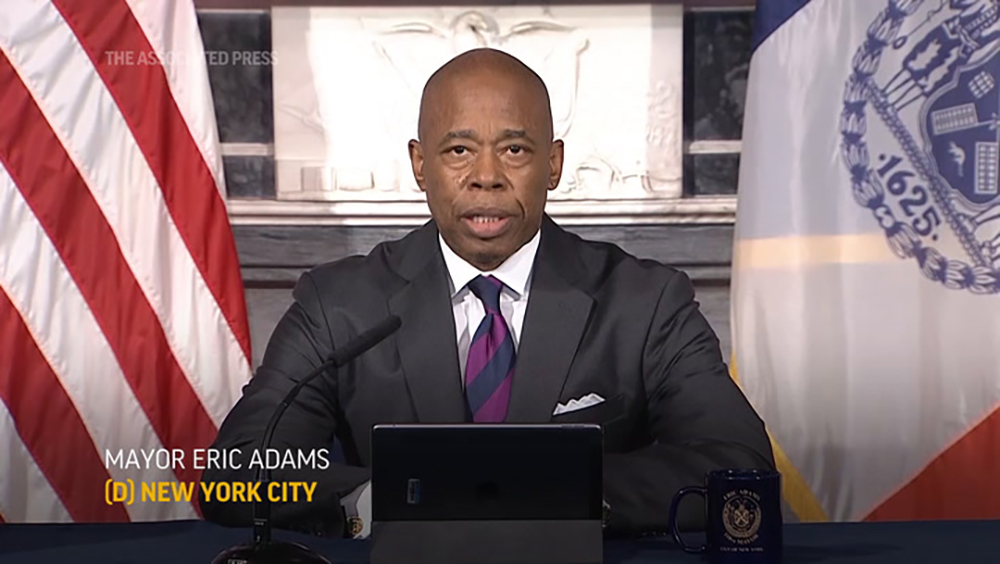|
Getting your Trinity Audio player ready...
|
Edited by: TJVNews.com
New York City’s housing market has long been a battleground for residents seeking affordable and adequate living spaces. The skyrocketing demand, coupled with a limited supply of apartments, has left many New Yorkers frustrated and desperate, according to a report that appeared on Friday on the TimeOut.com web site. Stories of lines wrapping around blocks and bidding wars that favor those with hefty down payments are all too common. But a new initiative from Mayor Eric Adams’ administration, known as “City of Yes for Housing Opportunity,” seeks to alleviate some of these pressures by introducing a novel approach: Accessory Dwelling Units (ADUs).
Rhode Island and Massachusetts are among the latest states to legalize accessory dwelling units, ADUs, statewide amid a housing shortage.https://t.co/2nUCybcWkh
— NCArchitects (@NCArchitects) August 12, 2024
The “City of Yes for Housing Opportunity” plan is designed to tackle the housing crisis by allowing homeowners of one- or two-family properties to add Accessory Dwelling Units (ADUs) to their homes. These ADUs can take the form of backyard cottages, basement apartments, or other types of small, independent living spaces measuring up to 800 square feet, as was reported by TimeOut.com. Crucially, these units must have separate entrances and comply with existing building and zoning codes, ensuring they fit seamlessly into the neighborhood.
The idea behind ADUs is not new, but it’s gaining traction in urban areas where housing is scarce and expensive. By permitting homeowners to build these additional units, the city’s objective is to create more living spaces without drastically altering the character of residential neighborhoods, according to the information provided in the TimeOut.com report. The ADUs could serve multiple purposes—housing aging family members, providing living quarters for caretakers, or generating rental income to help homeowners manage rising costs.
Accessory dwelling units can be a lifeline to affordable housing whether your family moves in or rents it out.
The #CityofYes for Housing Opportunity plan makes it easier for homeowners to expand their options and our housing supply:https://t.co/u5LHBaHq97
— Mayor Eric Adams (@NYCMayor) August 11, 2024
To kickstart the ADU initiative, the Adams administration has secured $4 million in grant funding. This pilot program will provide up to $395,000 per qualified homeowner through the Housing Preservation & Development (HPD) agency, supplemented by funds from New York State Homes and Community Renewal, as per the information contained in the TimeOut.com report. The grants are intended to cover the costs of building or converting an ADU on their property, making this option more accessible to a broader range of homeowners.
Free Webinar: All-Electric Accessory Dwelling Units for #Designers & #Building Owners, August 14, 10am-12pm ET: https://t.co/sFstOK4dAU @PGE4me #greenbuilding #buildings #ADUs #EVs #energyefficiency #electrification #design #homes #heatpumps #heating #cooling #ventilation #free pic.twitter.com/q0ylrSxuKV
— NYGreenBuilding (@NYGreenBuilding) August 11, 2024
The pilot program will initially allow up to 35 homeowners to create ADUs under the current zoning and building codes. While this may seem like a modest number, the initiative is seen as a critical first step in demonstrating the feasibility and benefits of ADUs in New York City, the TimeOut.com report noted. If successful, it could pave the way for a broader rollout, offering a scalable solution to the city’s housing woes.
When the pilot was first launched in 2023, it garnered significant interest from homeowners. According to city officials, nearly 80% of applicants expressed a desire to improve their family’s financial situation or to provide housing for a family member through the addition of an ADU, the TimeOut.com report explained. This response shines a spotlight on the potential of ADUs in addressing multiple needs, from financial relief to family support.
The introduction of ADUs in New York City offers several potential benefits. For homeowners, ADUs provide an opportunity to enhance their property’s value and generate additional income. For renters, these units could represent a more affordable housing option in a market where prices are continually climbing, the report on TimeOut.com affirmed. Moreover, ADUs can help address the housing shortage without the need for large-scale development projects that might face community opposition or require extensive infrastructure changes.
As part of the “City of Yes” plan, homeowners interested in creating ADUs on their properties will soon have access to a comprehensive “one-stop shop” portal. This portal will be designed to streamline the process of adding ADUs by offering a range of pre-approved designs, much like similar initiatives in Los Angeles and Eugene, Oregon, as per the information in the TimeOut.com report. The availability of these designs will simplify the planning and approval process for homeowners, reducing the bureaucratic hurdles that have often deterred property owners from pursuing such projects.
The portal is expected to include a library of designs that adhere to New York City’s stringent building and zoning codes, ensuring that ADUs are not only functional but also compliant with all relevant regulations. The report in TimeOut.com said that by providing these resources, the city’s goal is to make it easier for homeowners to add ADUs, thereby increasing the number of affordable housing units available to residents, particularly in neighborhoods where housing is in short supply.
The “City of Yes” initiative is currently under public review, and city officials are hailing it as the “most pro-housing zoning proposal in New York City’s history.” If fully implemented, the plan could lead to the construction of as many as 108,850 new homes over the next 15 years, marking a significant expansion of the city’s housing stock, as was indicated in the TimeOut.com report. This ambitious goal reflects the administration’s recognition that New York City is facing a housing crisis of unprecedented scale, one that requires equally bold solutions.
In a statement, Mayor Adams emphasized the importance of ADUs as part of the broader strategy to address the city’s housing challenges. “For our seniors fighting to stay in the neighborhoods they call home or young people struggling to find a living space, accessory dwelling units can be a lifeline to stable, affordable housing,” Adams said, according to the TimeOut.com report. He acknowledged that the city’s existing policies have often been outdated and inadequate in addressing the current housing needs, and stressed the necessity of modernizing these policies to better reflect the realities of today’s housing market. “The only solution is to build more and make it easier, not harder, for homeowners to join government in addressing this crisis head on,” Adams continued, the report added. “Together, we can build our way towards a better future, but that must include saying ‘yes’ to ‘City of Yes for Housing Opportunity’ and legalizing accessory dwelling units.”
While the introduction of ADUs is a major component of the “City of Yes” initiative, it is only one part of a much larger effort to transform New York City’s housing landscape. TimeOut.com reported that the city’s planning department is simultaneously pushing forward with additional plans that could add more than 50,000 new housing units across key areas of the city over the next 15 years. These areas include the Metro North station in the Bronx, Central Brooklyn, Midtown South in Manhattan, and both Long Island City and Jamaica in Queens.
These proposed zoning reforms are designed to encourage the development of high-density residential buildings in areas that are well-served by public transportation and other urban amenities. By focusing on these strategic locations, the city seeks to create new housing opportunities that are not only abundant but also accessible and sustainable, as was noted in the TimeOut.com report.





